Memphis is a city bursting with gardens, and that’s never more apparent than during this time of year. Stroll through nearly any neighborhood, and the colors and scents of myriad blossoms will enchant you. What’s more, so much of our artful horticulture goes on in the private domains of thousands of households, the delights of public spaces like the Memphis Botanic Garden and others notwithstanding. Yet how often do we step back and savor the blooms?
With a small shift in perspective, the humble, homey horticultural delights of a single yard can take on a far greater significance than you might imagine. All it takes is an appreciation of all our many yards in aggregate, and suddenly these tiny spaces can be seen as part of a movement of people determined to confront the crises of our time through their own love of greenery. This week, we salute the great gardening impulse of the city, with a particular focus on one neighborhood that’s leading the charge in getting us all to stop and smell the roses — not to mention the violets, and even a milkweed or two — and perhaps even save the planet while we’re at it.
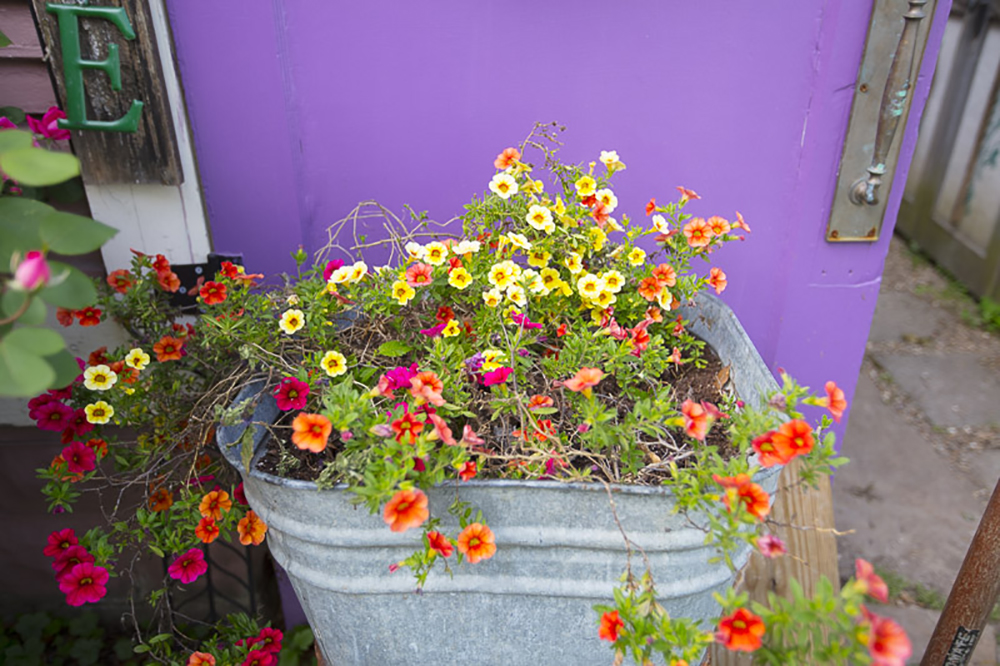
Walk the Walk
This past weekend, hundreds bore witness to just how dear our gardens are to us, as they devoted two idyllic days to simply walking, watching, and breathing in the fair aromas of countless petals. Many neighborhoods have garden clubs, of course, and we’ve all noticed the “garden of the month” signs that such clubs bestow on their most gifted planters, but none have taken the art of appreciation as far as the Cooper-Young Garden Walk, founded six years ago by neighborhood garden club member Kim Halyak.
“We really are lucky in Memphis,” she explains, when we speak in the days leading up to the event. “We’ve got a long growing season and a beautiful tree canopy. And now we have the largest garden walk in the Mid-South. We have people coming from Des Moines, Fredericksburg, Virginia, Texarkana, Little Rock, Knoxville, Nashville, and Cincinnati. I feel like we’re finally making inroads into garden tourism, which is a really big thing in the United States. If you’re not a gardener, you might not know that. But people travel all over the country, or even to England, just to tour gardens.”
Indeed, it was while visiting gardens elsewhere that Halyak was struck by the role such tourism could play in a city’s growth. “I’m from Pittsburgh, so once, when I went home to visit, my sister and I went up to the Buffalo garden walk. And I was so awestruck by it. I think we saw maybe 90 gardens that weekend. And at one point, I was standing on a street corner, trying to figure out where to go next, and I realized that I had never seen so many beautiful gardens all compressed together. I mean, there were literally 20 gardens on every block. And I had the epiphany that this is how you turn a city around. When you get enough people who are fixing up their yards, a street suddenly has not just one garden on the street, it’s a bunch of gardens, and then the streets multiply, and then it becomes a neighborhood thing. And my ultimate hope is that we can grow this beyond Cooper-Young.”
For now, just the one garden walk is plenty impressive. Initially featuring 23 gardens in its first year, and now including 94, the annual walk has attracted as many as 1,200 attendees in pre-COVID times. And there’s much more to it than simply taking in the view. “We’ll have educational speakers and vendors and booths,” says Halyak. “We’ll have speakers on herbs, vertical gardening, composting, botanical sprays, making sauerkraut, urban forestry. A little bit of everything. And this year, we’re going to have live music. That will be a first for us. All of these activities are at what we call the secret gardens, the back gardens. Some gardens on the walk are only on the front. But we have other gardens that are both front and back.”
In the accompanying guide book, details of each participating home and yard are provided, as well as information on supporting businesses and local organizations like the Memphis Herb Society, the Memphis Area Master Gardeners, and the West Tennessee Urban Forestry Council. Beyond such educational and networking opportunities, the garden walk is a shot in the arm for local businesses, many of whom offer discounts and deals for ticket-holders. For these merchants, the garden walk promises another kind of green and another kind of growth.
“My goal,” says Halyak, “was that at some point down the road we could be on the same scale as Buffalo. Because they have been doing it for 26 years, they have about 440 gardens that are open in one weekend, and they bring in 65,000 people. I’ve been told by people who run the Buffalo walk — and I’ve actually picked their brains, interviewed them, to really find out what makes theirs work — and they said they bring in about $5 million a year into the city, just because of the garden walk.” In the meantime, ticket sales alone benefit the Cooper-Young neighborhood. “We started ours as a way to raise money for beautification projects, and it has just grown.”
Go Native
Among the walk’s featured talks, one of the most forward-thinking, even ground-breaking speakers is not a horticulturalist by trade or education, at least of the formal variety, but, appropriately, simply a home gardener who wanted a deeper understanding of what she loves. Dana Sanders moved to Memphis in 2013 to work in healthcare, and attending the Cooper-Young garden walk had an immediate impact on her favorite hobby.
“For me, it’s not just about appearance. It probably was when I moved here. What really was the biggest impetus for change, for me, was going on the garden walk the first time. It must have been the second year they did it. I met Mike Larivee, who started The Compost Fairy. And the following year, Doug Tallamy came to speak. So those two people, and learning more through them, kind of fit with my interests. I’ve always been into conservation and protecting nature, but after meeting them I was like, ‘Oh! The little things really do make a difference.’”
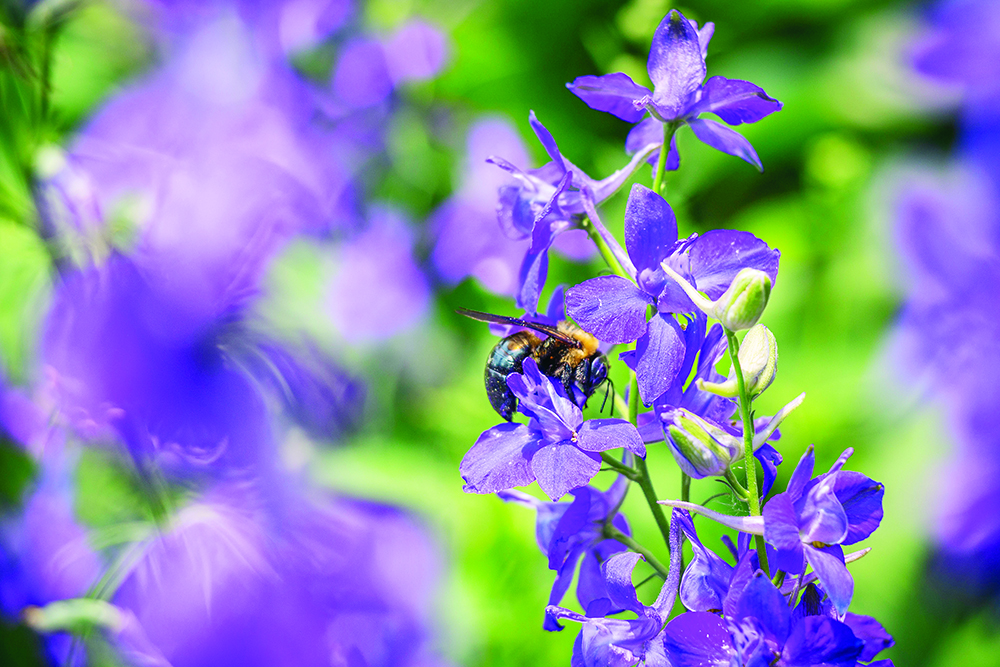
This year, Sanders herself will speak on the subject of cultivating more native plants, and the positive impact the practice can have on pollinators like butterflies and bees, now facing an unprecedented existential threat. As she explains, “Tallamy said, ‘Okay, we know that lawns are, hands down, the most irrigated, fertilized, non-edible use of land in the country. It doesn’t support anything, but 40 million acres in the U.S. are devoted to lawns. If everybody reduced their lawn by 50 percent, altogether that 20 million acres would double the amount of national parkland that we have. And this would make a huge difference in terms of carbon sequestration and supporting insects.’”
Indeed, Tallamy has brought into sharp relief just what an impact home gardeners can make. A professor in the department of entomology and wildlife ecology at the University of Delaware, he has an acute understanding of how plants that have co-evolved with local insect and bird populations can bolster the well-being of those species and entire ecosystems. As he notes in one interview, “Eighty-five percent of our woody invasive plants are from our gardens. So we’ve converted an awful lot of our land into a landscape with non-native plants that are not supporting the food webs that everything else needs.” The answer, he says, is to build a “homegrown national park,” composed of a patchwork of home gardens favoring native plants on which pollinators can better thrive.
The Cooper-Young neighborhood, it turns out, is full of gardeners receptive to such ideas. As Halyak observes, “I would say that 60 percent of us have taken native plants to heart, way higher than the average population in Memphis. At the garden walk, we will have educational signs all around the neighborhood about pollinators and native plants. We’ll have some native plants marked, and we’ll have tags on invasive plants. We had Doug Tallamy as a guest speaker a couple of years ago, and I would say he is the premier speaker of the pollinator movement in the United States. And after he spoke, all of us were like, ‘Oh my gosh, we had no idea.’ So we’ve all been embracing it ever since.”
Mike Larivee is a Cooper-Young resident who took Tallamy’s writings to heart very early on. In 2017, he started a nonprofit called The Compost Fairy, which collects kitchen waste from homes and businesses, composts it on a massive scale, then delivers the resulting compost to members’ homes and gardens. It proved so successful that the enterprise has recently partnered with Atlas Organics and is now part of a massive, multi-state group doing similar work throughout the South.
“I was tremendously influenced by Doug Tallamy’s writings,” says Larivee. “He’s a role model for me, with the backyard national park idea. We have 136 native species in my yard, and it’s growing. Lots of diversity, lots of habitat, lots of Tennessee native plant material.
“The soil is the foundation of the terrestrial ecosystem, and you’ve got to have a solid foundation to build a house on. I grew up on a farm, so throwing food waste in the trash was not a thing, ever, in my family. We grew all our own food, so I grew up knowing where food came from, which a lot of kids don’t know these days. And you always have to start with the soil, because if you take care of the soil, it will take care of you.”
Furthermore, he says, Tallamy’s approach is both productive and beautiful. “You know, ‘Lawns=Yawns.’ They’re pretty boring. They don’t do anything for us. And culturally, the lawn says, ‘I’m so rich and I have so many resources that I don’t have to do anything with them. I can just leave this space unproductive and look at it.’ That never made any sense to me. In contrast, we make a thousand pounds of food a year on my fifth of an acre. We’ve got bee hives and chickens and ducks and 15 fruit trees and raspberry and blackberry canes on the side of the house. It’s a creative and productive use of space.
“Native plants are pretty, and they’re low maintenance. They know what to do here. You don’t have to hold their hand. That way, I have time for other projects. I’m busy!”
“Smell me, touch me, taste me.”
Ultimately, Halyak hopes the model of the Cooper-Young Garden Walk will expand. “My ultimate hope is that we can grow this beyond Cooper-Young,” she says. “Last October, Memphis Art & Design Week reached out to me and said, ‘Is there any way you could pool some gardens together?’ So I reached out to Soulsville and we had two gardens there. We did Orange Mound, where we had three gardens. We did Cooper-Young with two gardens, and we had two or three gardens in Bartlett. And it was a one-day tour, from 10-2. I had no idea how many people would come, because it was not promoted very well, but there were 100 people who toured those gardens.”
Other gardens are growing throughout the city, of course, but perhaps the most inspiring model, horticulturally speaking, is in Frayser. That’s where an elementary school decided to go beyond the “Hey kids, let’s plant radishes!” approach to horticultural education and took over an abandoned lot across the street. It’s managed by David Vaughan and, as Mike Larivee puts it, “he’s a badass!”
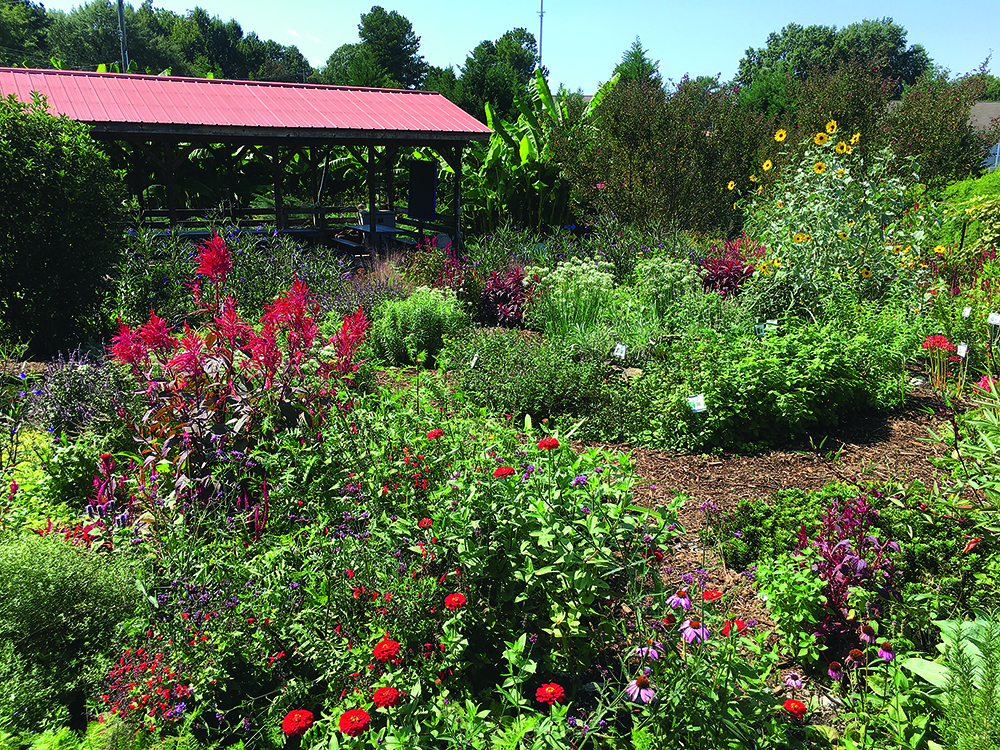
“I work at New Hope Christian Academy,” Vaughan explains. “Our space is about three-quarters of an acre and is both an outdoor classroom and a production garden. We have flowers, herbs, fruit trees, tons of vegetables, but also spaces geared strictly toward education and inspiring awe in students. Chris Cosby helped me design the space eight years ago.”
At the time, Vaughan worked for Cosby at the Memphis Botanic Garden, and together they crafted an approach that, like Larivee’s, blurs the line between the ornamental and the productive. And it’s exemplary of an approach that features native plants. “I think New Hope could be a really good model for community gardens. Our techniques are replicable. We’ve taken what was an abandoned lot, with your standard red clay, and really transformed it. We haven’t tilled since year one, when we broke ground with a tractor. Since then, we’ve just been composting and doing heavy mulching.”
Much of what Vaughan does at New Hope could make for the ultimate home garden. “I’ve been implementing more ornamental elements due to my experience at the Botanic Garden — with plants and color combinations. We have a garden at the farm that’s a sensory garden. It’s for the senses and very ornamentally based. A big chunk of our mission is to get kids inspired. And right as you enter the farm, there’s a big circular space that engages all the senses, with tons of signage. ‘Smell me, touch me, taste me.’ There’s tons of color and a lot of height differences, and at the center is an herb spiral — a permaculture technique where you have a bed of plants that starts from three to four feet tall and then spirals downward. So you’re creating these microclimates.”
Vaughan notes that New Hope is not the only example of enlightened farming. Like Halyak, he’d like to see more citywide momentum. “One of the biggest problems in Memphis is the lack of a connecting force for gardening and horticulture. There are all these individual gems throughout the city that are doing good things.” The beauty of having so many gems, of course, is in their diversity, and ultimately this is both ecologically and aesthetically sound. It’s something to consider when strolling past yards exploding with color: Each one of them could mark a fundamental step toward environmental health, a future where pollinators and the systems supporting them can thrive in a million different settings, no matter their size or scale.
That’s one thing that appeals to Sanders, who, like most of us, is just trying to make her home a better, more sustainable space. “There’s this mentality of ‘Yards are just supposed to look pretty,’” she says. “Now, because of what we know, we have a chance to make a difference in our ecology. So my little postage stamp of a yard really can make a difference.”

 ioby
ioby 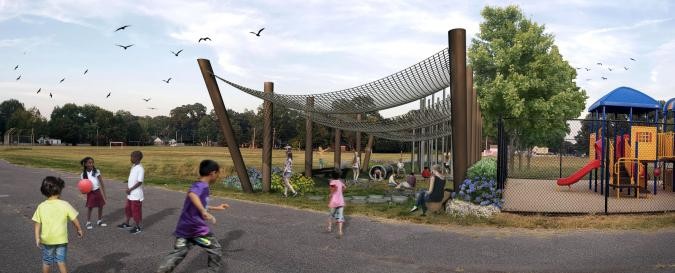 ioby
ioby 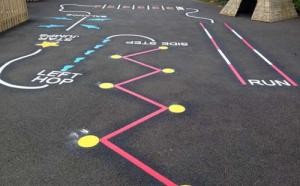
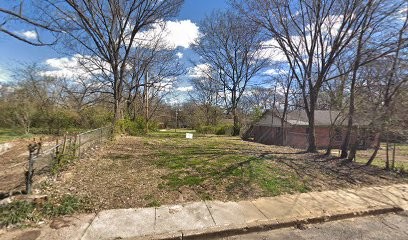 Google Maps
Google Maps  ioby
ioby 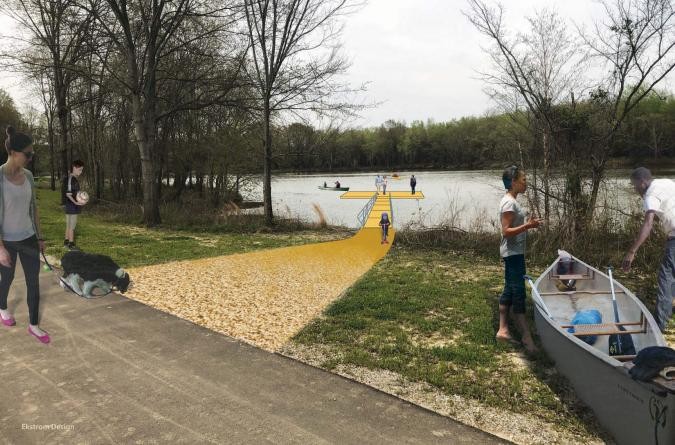 Wolf River Conservancy
Wolf River Conservancy